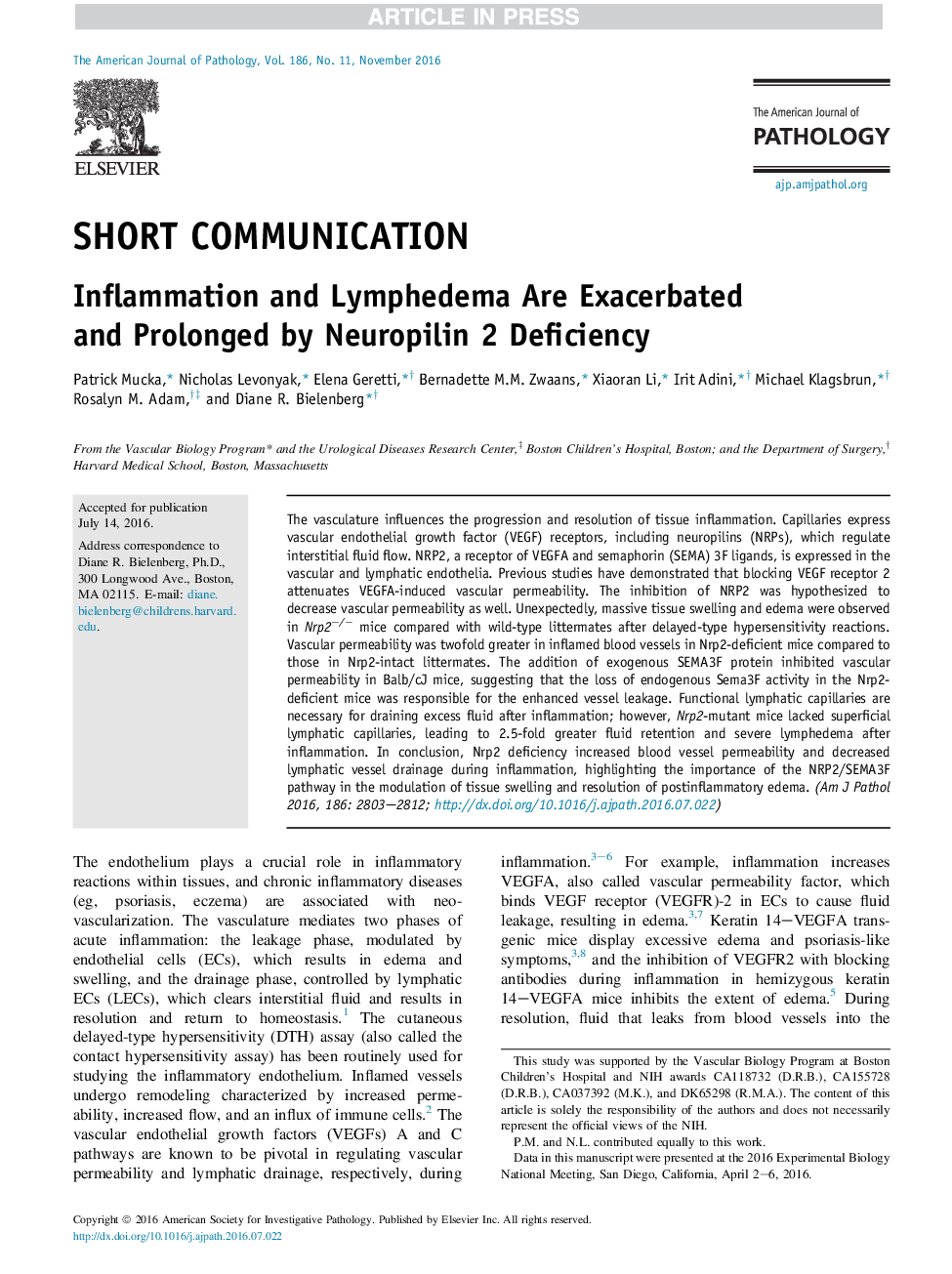| Article ID | Journal | Published Year | Pages | File Type |
|---|---|---|---|---|
| 5596217 | The American Journal of Pathology | 2016 | 11 Pages |
Abstract
The vasculature influences the progression and resolution of tissue inflammation. Capillaries express vascular endothelial growth factor (VEGF) receptors, including neuropilins (NRPs), which regulate interstitial fluid flow. NRP2, a receptor of VEGFA and semaphorin (SEMA) 3F ligands, is expressed in the vascular and lymphatic endothelia. Previous studies have demonstrated that blocking VEGF receptor 2 attenuates VEGFA-induced vascular permeability. The inhibition of NRP2 was hypothesized to decrease vascular permeability as well. Unexpectedly, massive tissue swelling and edema were observed in Nrp2â/â mice compared with wild-type littermates after delayed-type hypersensitivity reactions. Vascular permeability was twofold greater in inflamed blood vessels in Nrp2-deficient mice compared to those in Nrp2-intact littermates. The addition of exogenous SEMA3F protein inhibited vascular permeability in Balb/cJ mice, suggesting that the loss of endogenous Sema3F activity in the Nrp2-deficient mice was responsible for the enhanced vessel leakage. Functional lymphatic capillaries are necessary for draining excess fluid after inflammation; however, Nrp2-mutant mice lacked superficial lymphatic capillaries, leading to 2.5-fold greater fluid retention and severe lymphedema after inflammation. In conclusion, Nrp2 deficiency increased blood vessel permeability and decreased lymphatic vessel drainage during inflammation, highlighting the importance of the NRP2/SEMA3F pathway in the modulation of tissue swelling and resolution of postinflammatory edema.
Related Topics
Health Sciences
Medicine and Dentistry
Cardiology and Cardiovascular Medicine
Authors
Patrick Mucka, Nicholas Levonyak, Elena Geretti, Bernadette M.M. Zwaans, Xiaoran Li, Irit Adini, Michael Klagsbrun, Rosalyn M. Adam, Diane R. Bielenberg,
